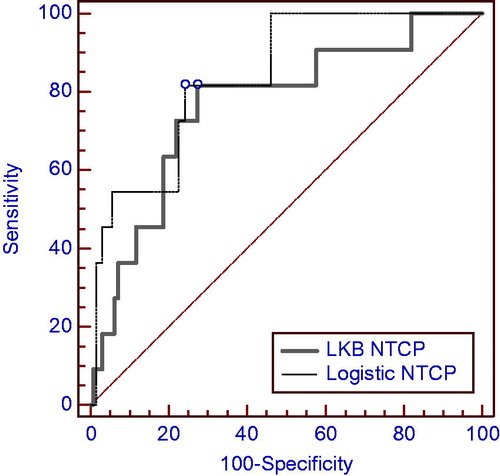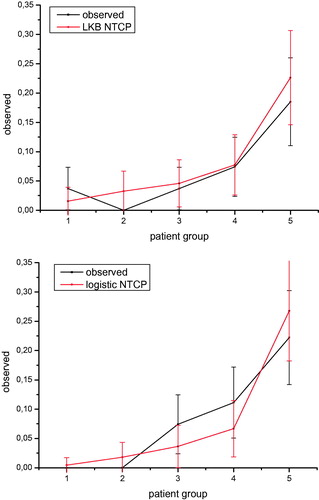Figures & data
Figure 1. A pictorial representation of the Body dose-surface histogram extraction from the external body shell dose-volume histogram.
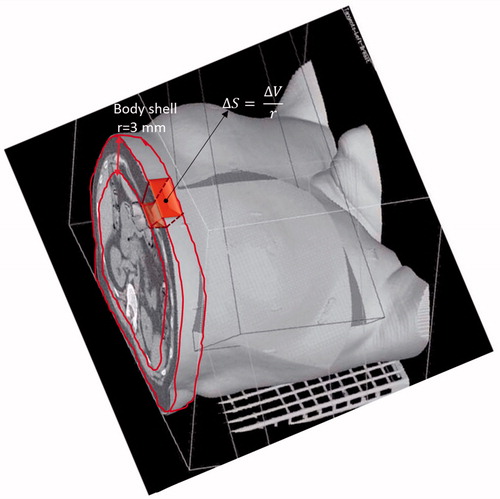
Table I. Clinical variables and correlation coefficient (Rs) with RIST incidence.
Figure 2. (a) Mean cumulative patient DSHs. Red (gray, in black and white print version) lines: patients who developed severe radiation-induced skin toxicity ± SEM (Standard Error of the mean); black lines: patients who did not develop severe radiation-induced skin toxicity ± SEM. (b) Semi-logarithmic plot for the two-sample t-test between surface dose values for the two patient groups (with and without toxicity) at each dose point. The horizontal line represents the significance level of 0.05.
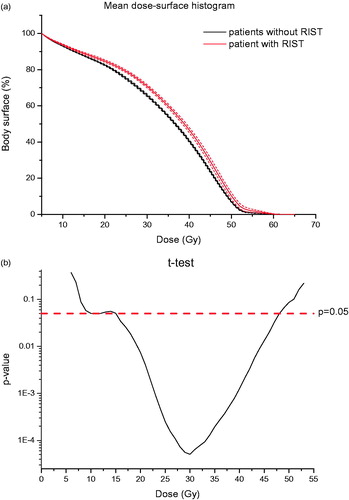
Figure 3. Likelihood estimation values plotted as a function of heart LKB parameters. (a) m and TD50 for a fixed value of n=0.38; (b) TD50 and n for a fixed value of m=0.14; (c) n and m for a fixed value of TD50=39 Gy; (d) NTCP bundle of curves showing 95% confidence interval region for the model fit. The red point corresponds to the optimum LLH. LKB, Lyman-Kutcher-Burman; LLH, log-likelihood; NTCP, normal tissue complication probability; TD50, uniform dose given to the entire organ volume that results in 50% complication probability.
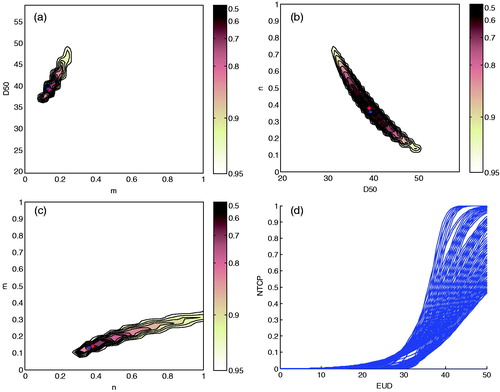
Table II. NTCP models: parameters estimates and 95% confidence intervals of LKB model and best-fit coefficients for logistic model with odds ratios (OR). Performance measures for LKB and logistic NTCP models.

